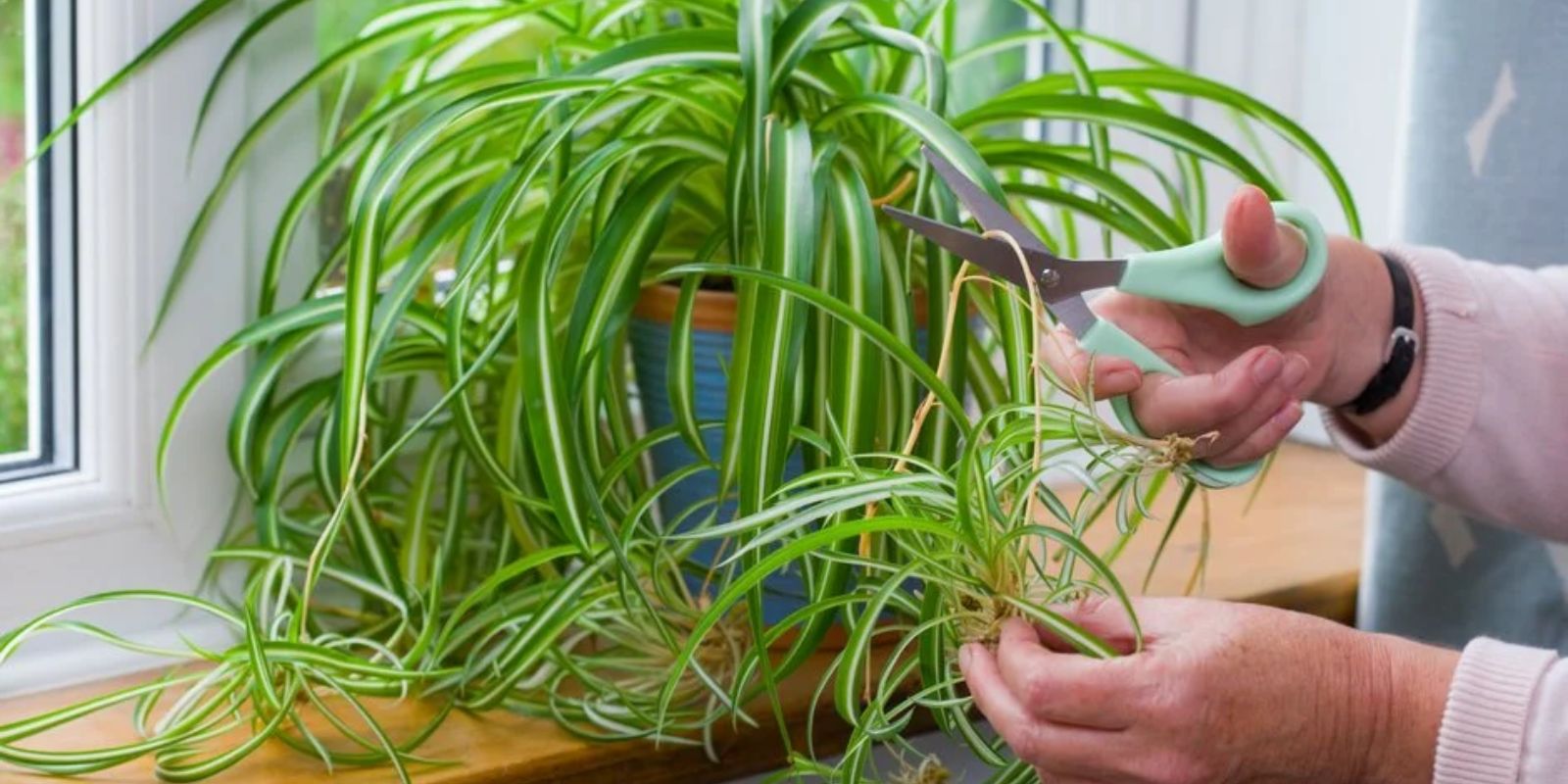Spider plants, scientifically known as Chlorophytum comosum, are among the most popular houseplants due to their adaptability, ease of care, and air-purifying qualities. With their graceful, arching leaves and charming spider-like plantlets, they add a touch of greenery and elegance to any space. If you’re looking to keep your spider plant healthy and thriving, this comprehensive guide will provide you with essential tips and best practices for optimal care.
1. Providing the Right Light Conditions
Light plays a crucial role in the health and growth of your spider plant. Ensuring your plant receives the appropriate amount of light will keep it lush and vibrant.
Optimal Light Conditions:
- Bright, Indirect Light: Spider plants thrive in bright, indirect light. A spot near a window with filtered light is ideal. Direct sunlight can scorch the leaves, causing brown tips and spots.
- Avoid Low Light: While spider plants are tolerant of lower light conditions, they may become leggy and produce fewer plantlets if light is insufficient.
Benefits:
- Healthy Growth: Proper light conditions promote strong, healthy growth and a fuller plant.
- Vibrant Foliage: Adequate light helps maintain the bright, green color of the leaves and encourages the production of plantlets.
2. Mastering the Art of Watering
Watering is a critical aspect of spider plant care. Proper watering techniques ensure that the plant remains healthy and avoids common issues like root rot.
Watering Tips:
- Water When Dry: Water your spider plant when the top inch of soil feels dry. Overwatering can lead to root rot, while underwatering can cause the leaves to become dry and crispy.
- Use Room Temperature Water: Avoid using cold water, as it can shock the plant. Room temperature water is gentle on the roots and promotes better absorption.
- Ensure Good Drainage: Use a pot with drainage holes to prevent water from accumulating at the bottom. This helps avoid waterlogging and root rot.
Benefits:
- Prevents Root Rot: Proper watering practices help maintain healthy roots and prevent water-related issues.
- Promotes Healthy Growth: Consistent watering supports overall plant health and encourages vigorous growth.
3. Maintaining the Right Humidity
Spider plants prefer moderate humidity and can adapt to various indoor conditions. However, maintaining optimal humidity levels can enhance their growth and appearance.
Humidity Management:
- Moderate Humidity: Spider plants do well in average indoor humidity levels. If your home is particularly dry, especially during winter, consider using a humidifier or placing a tray of water near the plant.
- Regular Misting: Lightly misting the leaves occasionally can help maintain humidity and prevent dryness, especially in dry indoor environments.
Benefits:
- Prevents Dry Leaves: Maintaining appropriate humidity levels helps prevent the leaves from becoming dry and brown.
- Supports Healthy Growth: Adequate humidity contributes to overall plant health and supports lush, vibrant foliage.
4. Fertilizing for Optimal Growth
Regular fertilization is important for providing your spider plant with the nutrients it needs to thrive. A balanced fertilization routine will support healthy growth and abundant plantlets.
Fertilization Tips:
- Use Balanced Fertilizer: Feed your spider plant with a balanced, liquid fertilizer (e.g., 10-10-10) once a month during the growing season (spring and summer). Dilute the fertilizer to half strength to avoid over-fertilization.
- Avoid Over-Fertilizing: Excessive fertilizer can lead to salt buildup in the soil, which can harm the plant. Stick to the recommended dosage and frequency.
Benefits:
- Promotes Healthy Growth: Regular feeding provides essential nutrients that support strong, vigorous growth and overall plant health.
- Encourages Plantlets: Proper fertilization enhances the production of plantlets, contributing to the plant’s characteristic appearance.
5. Repotting When Necessary
Repotting is an essential part of spider plant care, helping to refresh the soil and provide more space for growth. Proper repotting ensures that your plant continues to thrive and avoid becoming root-bound.
Repotting Tips:
- When to Repot: Repot your spider plant every 1-2 years or when you notice that the plant has become root-bound or the soil has degraded. Signs of root-bound conditions include roots growing out of the drainage holes or slowed growth.
- Repotting Process: Gently remove the plant from its pot, untangle any roots if necessary, and place it in a slightly larger pot with fresh potting mix. Ensure the new pot has drainage holes to prevent waterlogging.
Benefits:
- Refreshes Soil: Repotting provides fresh soil and nutrients, supporting continued healthy growth.
- Prevents Root-Bound Conditions: Giving the plant more space helps prevent root-bound issues and allows for better root development.
Additional Tips for Spider Plant Care
Pest Control:
- Check Regularly: Spider plants are generally resistant to pests but can occasionally attract spider mites or aphids. Regularly inspect the leaves for any signs of pests and treat them promptly if detected.
Pruning and Maintenance:
- Trim Dead Leaves: Remove any dead or damaged leaves to maintain the plant’s appearance and promote new growth.
- Remove Old Plantlets: If plantlets become too numerous, you can remove some to encourage the production of new ones and maintain the plant’s health.
Benefits:
- Keeps Plant Healthy: Regular maintenance helps prevent pests and diseases, ensuring a healthy and attractive plant.
- Enhances Appearance: Pruning and removing old plantlets keeps the plant looking its best and encourages new growth.
Conclusion
Taking care of a spider plant is relatively straightforward, but attention to detail can make a significant difference in its health and appearance. By providing the right light conditions, mastering watering techniques, maintaining appropriate humidity, fertilizing regularly, and repotting when necessary, you can ensure that your spider plant thrives and continues to beautify your space.
With these tips, you’ll be well-equipped to nurture a healthy, vibrant spider plant that adds charm and greenery to your home. Enjoy the satisfaction of watching your spider plant flourish and appreciate the fresh touch it brings to your indoor environment.
Happy gardening!

